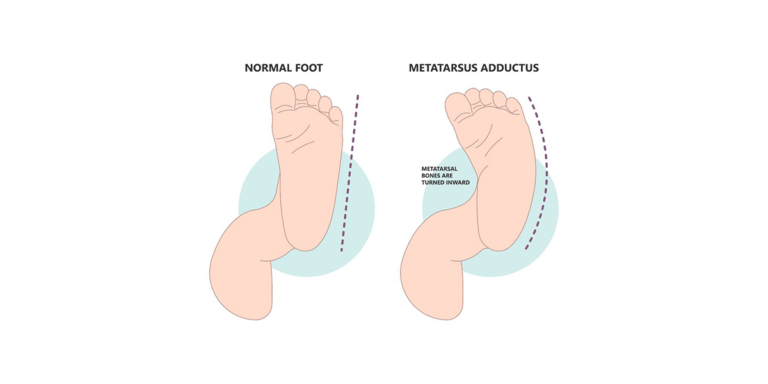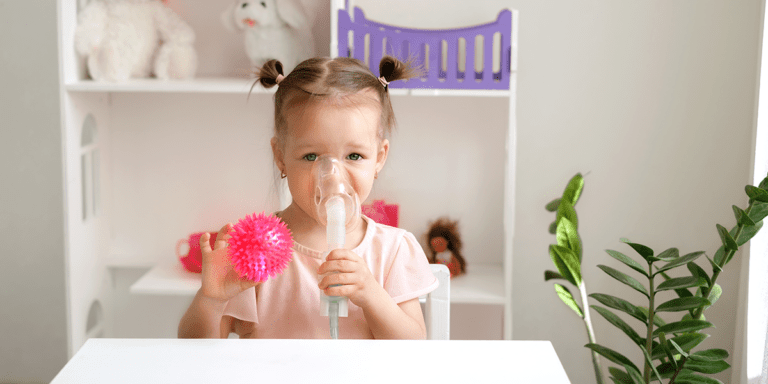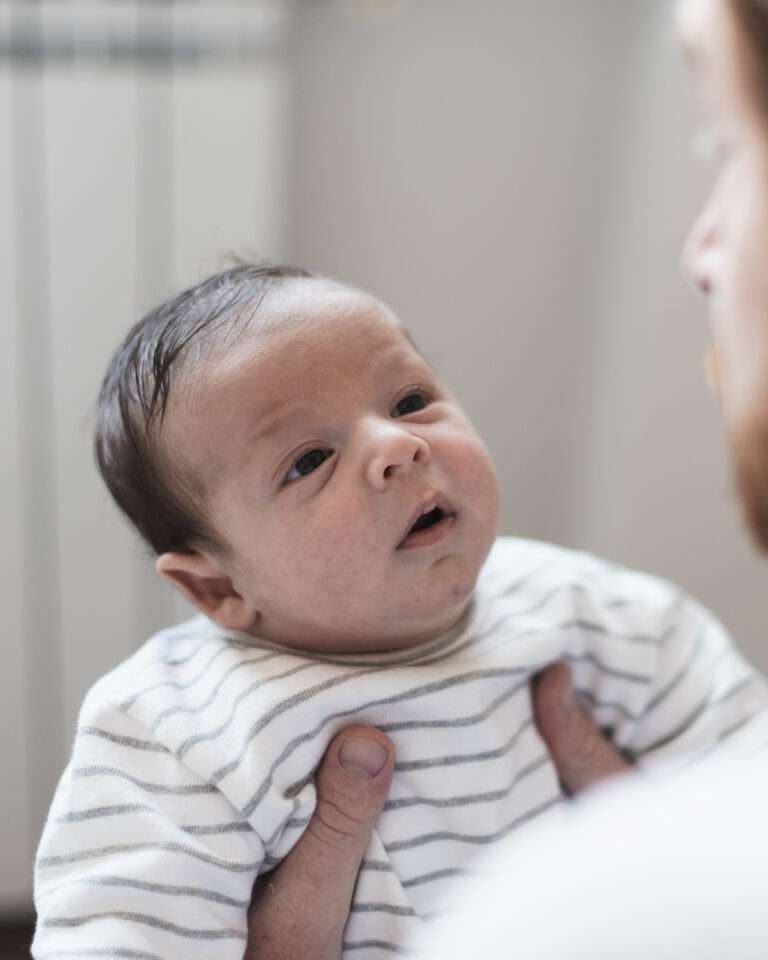Pavlik Harness Guide -Usage, Care, and Results
- Dr Owais Rafiq
- November 30, 2023
- 8:11 am

How do I make my child comfortable in Pavlik harness – a guide to taking care of a child in harness
It is a natural reaction to feel distressed, confused, and worried to discover that their child has a hip problem and would be kept restricted in a harness for 6-8 weeks.
In addition, the parents are also emotionally burdened when they continuously have to deal with reactions from other people in the environment around them ( friends, family, neighbors) on their child with the harness so much so that some of the parents might resort to thinking of the condition as a handicap and would often blame themselves for the baby’s condition.
Why did my child get a hip problem, to begin with?
It is very important to understand the fact that when the child develops dysplasia of the hip it isn’t anybody’s fault and neither can it be prevented, the child’s hip joint was formed this way with the topmost part of the thigh bone, and the socket in to which it is supposed to fit not being in to complete contact with each other.
This condition may vary from mild subluxation where there is still contact between the top of the thigh or the femur head in other words and the socket but this contact is loose to frank dislocation where the head of the femur completely lies outside the socket.
Is there a way I can avoid Palvik harness for my child?
Once the child is diagnosed, early treatment should be ensured, it is best to start early as the condition if detected and treated in time can be resolved by simple harness application. Some babies who do not respond to the Pavlik harness or in whom the condition is diagnosed at a later stage may require complex procedures such as cast application or even surgical procedures.
What is a Pavlik harness?
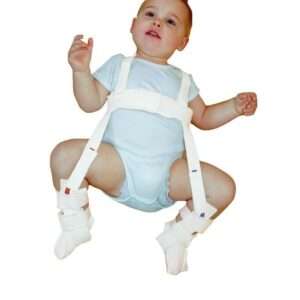
Pavlik harness is a soft brace that helps to keep the hip joint in place once the hips have been reduced by an orthopedic surgeon and provides continuous support while the hip is mature enough to be contained.
What does a Pavlik harness look like?
A Pavlik harness is initially placed under the vest of the baby and consists of a chest strap that goes around the nipples of the baby, in addition, it has 2 shoulder straps that are fastened to the upper body of the child and 4 leg straps with small boots attached to it.
It is very important that these straps are properly positioned to ensure proper reduction and molding of the femur head into its socket.
How to make sure that the Pavlik harness is properly fitted?
The chest strap usually goes around the nipple and the shoulder strap covers the upper body, the leg straps are four in number, those present on either side serve to keep the child’s leg apart while the ones in the front keep the legs in the flexed position.
A harness that is too tight may do more damage and one that is loose may not hold the hip properly in place.
Can the Pavlik harness be applied to all babies?
It is typically used to treat dysplasia in less than 6-month-old babies but in some cases where the harness is not functioning well, your doctor might restore to other modes of treatment even in a younger child.
How to make sure my child is getting better while in a Pavlik harness?
Appropriate periodic follow-ups are usually scheduled during the course of the treatment. An ultrasound is usually performed once or twice to make sure that the hips are properly allocated in the socket and are being remodeled.
During follow up if the health care provider notices that the hips are not reduced, it may require readjustment or change of treatment modality.
What is the treatment duration for the Pavlik harness?
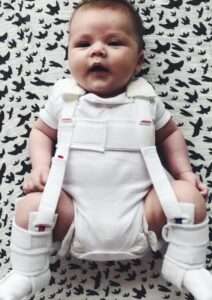
The answer to this question greatly varies depending upon the severity of the condition and is influenced by the progress a baby’s hip makes during follow-up. It is usually worn for 24 hours a day and as a general rule, 6-12 weeks of treatment is sufficient in most of the cases.
Depending upon the severity of the dysplasia, for the first few weeks, they might see the doctor weekly to adjust the harness. After 3-4 weeks you will only need to see the doctor once every 2-4 weeks. After 6 weeks the baby will be scheduled to have an ultrasound without a harness which would determine if the child should stop wearing the harness full time.
Can I remove the harness?
You should not remove the harness, it is ideal to be kept for 24 hrs for the best results and has to be applied by an experienced clinician.
How to weight the child on a harness?
If the child is due for regular pediatric follow-up and requires to be weighed, the harness should be kept in place while removing the clothes and the nappy, the harness weight can then be added to the final weight of the child.
Can I get my baby vaccinated while on a Palvik harness?
It is absolutely safe for the babies to get vaccinated while being on a Pavlik harness, both the upper thigh and shoulder region can be utilized in cases of IM injection application.
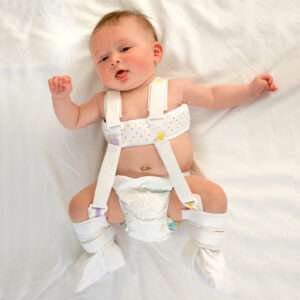
What about clothing for my child while being on a harness?
The harness is worn underneath your baby’s clothes and worn best with one-piece sleep sacks and larger-sized clothing that help to prevent any restriction of movement for the child’s leg. Any clothing that causes the knees to come together such as tight pants or dresses with a waistband should be avoided.

How to shower and provide skin care while the child is on a harness?
- Bathing in a bathtub is usually avoided while they are wearing the harness full time, sponge bath can be used as an alternative.
- Vigilant skin care is very important to prevent any skin breakdown or irritation while the child’s hips are maintained in the harness.
- Do not apply lotions on your baby’s skin areas that come in contact with the harness as it could moisten and irritate the skin, also avoid the use of powders as they may also be a source of irritation.
- Extra attention should be paid to the groin creases and the creases behind the knee joints because the harness keeps the knee flexed these areas often stay moist and may cause the skin to easily break and get irritated. It is best to keep a paper towel or a dry cloth in the groin and the knee joint every time diapers are changed.
- Regular check-ups several times a day should be done in these above-mentioned areas.
What activities can be done while the child is on a palvik harness?
- Breastfeeding: If the child is being breastfed, you can continue breastfeeding while the baby wears a Pavlik harness, try curling up next to the baby, underarm feeding, or using a V-shaped pillow to support the baby in a normal position.
- Playing: For playtime, lay the baby on the back, baby bouncers, baby walkers, and swaddling should be avoided.
How to make sure that the child is sleeping comfortably while on a harness?
Sleeping on the back is encouraged for the hips, make sure that the child lies on a flat surface most if the time. If your child is inconsolable then most likely it may not be due to harness, look for other causes like a tummy upset, teething, or fever. The baby should not be laid to the sides.
When to seek medical attention?
- In case of skin irritation or redness.
- Accidental loosening or spoilage of harness.
- If the child is not kicking one or both of his legs.
- If the child is continuously crying and you can not comfort them.
What happens after the harness comes out?
After successful completion of the treatment, the child may be made to wear a nighttime brace for another 4 weeks to ensure that the hips are fully stable. The baby might be uncomfortable for a while after the removal of the Pavlik harness and may have disturbed sleep patterns as they adjust to being without the harness. It may be noticed that your child holds his leg in a frogged-legged position which is quite normal and expected. The baby can be handled normally and routine activities may be commenced.
Dr Owais Rafiq
Subscribe to Dr Owais YouTube channel
For parenting advice, child health, symptoms, causes and treatment of illness in children.

